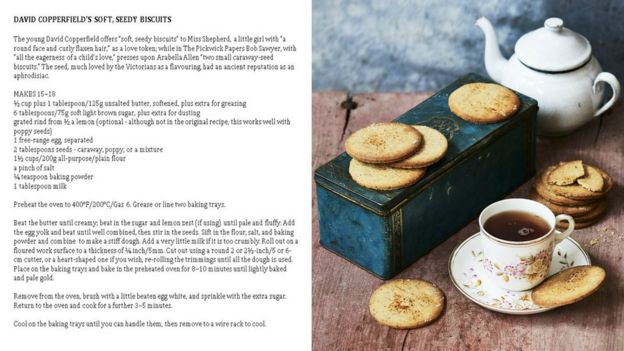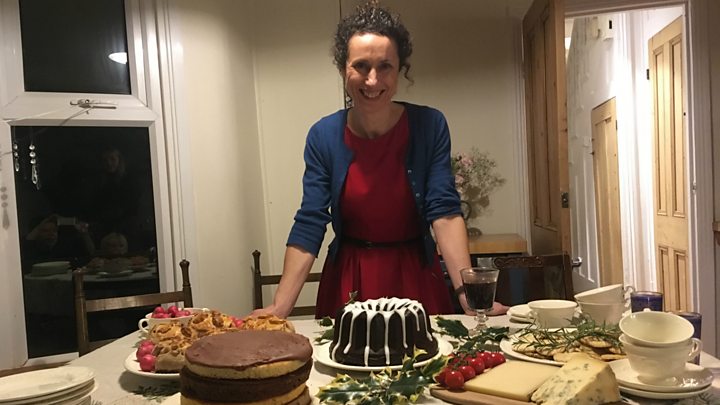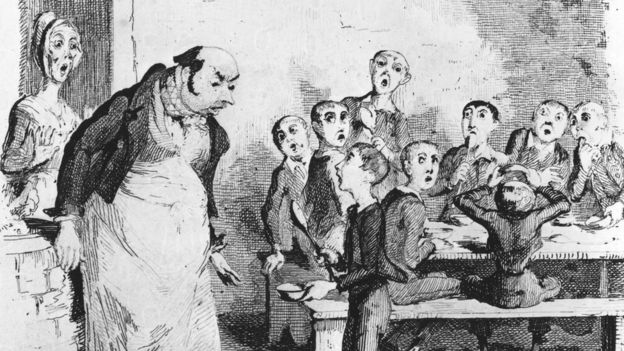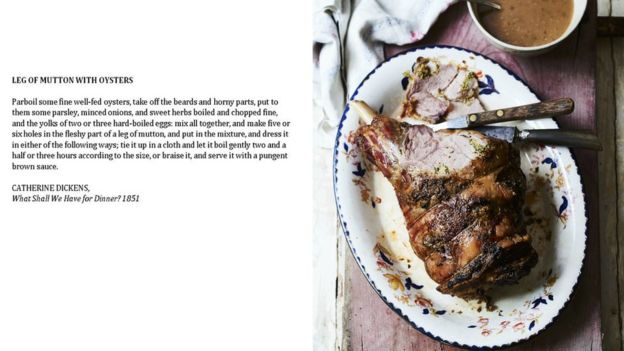How the food of Charles Dickens
defined Christmas

Charles Dickens was a serious foodie and his literature introduced a festive menu that has barely changed since the Cratchits gathered round their table in A Christmas Carol.
"The thing about Dickens," says food historian Pen Vogler as she takes a tray of caraway seed biscuits out of the oven, "is that he knew what it was like to be hungry."
She's explored how cuisine shaped his writing in her recipe book, Dinner With Dickens. In it she recreates dishes that the literary giant wrote about, and shows how he used food to create character and comedy but also highlighted social issues.
She's also whipped up a Christmas pudding but thankfully has avoided making gruel.
 CICO BOOKS
CICO BOOKS
"Dickens did not have food security as a child," continues Pen as she slips the steaming biscuits onto a wire rack to cool.
"His novels often contain innocent, hungry children - he wanted to show readers that good food and nourishment were a human right, even if you were poor."
When Charles Dickens was 12, his father was imprisoned for debt and while the rest of the family went to live with him in prison, Charles was sent to work in a blacking factory where he had to manage his tiny wages to buy penny buns and bread to eat.
His interest in food, says Pen, stems from this time.

In his writing, his characters' attitude to food often gives us clues to their morality. Fat adults often starve thin children; characters who share and enjoy lavish feasts are good, characters who make lavish food just for show or who waste food are generally bad. Think Miss Havisham's wedding cake….
"If the right emotional feelings are not there, it is worse than worthless," says Pen. "Food's got to be enjoyed in the right way and appreciated. Food for him was much more emotional than showy."
 GETTY IMAGES
GETTY IMAGES
Charles Dickens was a serious foodie (check out his leg of mutton stuffed with oysters) who was famous for his generous dinner parties; his wife Catherine even published a little book of recipes to suit all budgets.
"If Dickens had been alive today," muses Pen as she chops apples, "I could definitely see him judging Bake Off, although he was much more of a savoury man than a pudding man."
She grates some nutmeg. "There are very few cakes and puddings in his writings except in the autobiographical David Copperfield where he remembers the sweet tooth and treats of childhood."
Pen's little black cat watches attentively from the floor as she stirs currants into her Christmas pudding mix. She tips in a very generous amount of brandy.
"Dickens loved a drink!" she says. "He even sent a recipe to a friend for punch so we know exactly how he made it - and his characters drink it all the time! He also drank champagne and claret for celebrations and things we've lost the taste for like purl, flip, dog's nose and wassail."
 CICO BOOKS
CICO BOOKS
In 1843, Dickens published A Christmas Carol, which contained the famous scene of the Cratchits contentedly gathered round the crackling fire with their goose, apples and oranges, chestnuts and the "speckled cannon ball" pudding.
With his emphasis on a family gathering, believes Pen, Dickens set the template for today's Christmas celebrations.
"Until the publication of a Christmas Carol," says Pen, "Christmas pudding was known only as plum pudding - but after that, plum pudding was afterwards always referred to as Christmas pudding… and if you think about it, our Christmas menu hasn't changed since the Cratchits!"
No comments:
Post a Comment